
| Eszter Fazekas | Main Tendecies of Hungarian Film from 1945 till 1979 |

|
Hungarian film in the Coalition Period, Nationalisation(1945-48)
The era of Stereotype and Pre-war Tradition (1949-1953)
The New Voices in Hungarian film: social criticism and poetic realism (1953-1956)
Banned Films, Classics and Personal Stories (1956-1962)
The Heyday of Hungarian Film (1963-1970)
Social criticism and realism, historical analysis
Disguised messages and new wave
Dialogue and visual style
Popular films
Aestheticism, Documentaries, Experimental Film - searching for new ways in the 70s
(1970-1978)
Aestheticism, parable
Looking back (the "retro-film"); opening towards the audience
Documentary and fiction
Documentary and satire
Documentary and experimental film
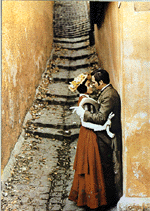 Zoltán Huszárik: Sindbad, 1971 101 KByte |
Hungarian film in the Coalition Period, Nationalisation(1945-48) The battle of Budapest was still going on when, on the 30th January 1945, the mayor issued a decree to re-start film production. Another ruling soon followed ordering the beginning of production in the restored Gyarmat Street studios, owned by Hunnia Film Co. In spite of the ravages of war, the structure and organisation of film production remained untouched. In October 1945, Márton Keleti shot the first post-war film in Europe. The first film of the "democratic Hungarian film production", it was a social idyll based on Sándor Bródy’s play (A tanítónő - The School-Mistress, 1945). It was, however, very difficult to start again. There was no money and no film stock; the distribution system had fallen apart; only about half the cinemas were still functioning. There were 52 films made in 1943 and only 14 in the four years between 1945 and 1948. By the end of 1946 only four features had been shot, all of them privately financed. Hungarian film production slowly became a political issue, so each party in the coalition government had one film made. The one supported by the Communist Party, Valahol Európában (Somewhere in Europe, 1947) by Géza Radványi was an outstanding film. The story had a universal appeal, especially in Europe: it was about gangs of children, abandoned, orphaned during the war, trying to survive. The story conveyed a deep longing for peace and showed strong faith in the victory of human decency and freedom. The cathartic message was expressed in poetic images (slightly similar to the German expressionists), through lighting effects and dramatic montage sequences. It was a success throughout the world. Beszterce ostroma (The Siege of Beszterce, 1948), supported by the Social Democrats and directed by Márton Keleti, carried on pre-war traditions. Because of political in-fighting the film made by the Smallholders’ Party, Könnyű múzsa (The Light Muse, 1947) and the National Peasants’ Party’s Mezei próféta (The Prophet of the Fields, 1947, based on the works of Áron Tamási) were never released. There was one filmmaker who managed to remain independent of party politics - István Szőts. His film, Ének a búzamezőkről (Song of the Cornfields, 1947) was based on a novel by Ferenc Móra. It was a dramatic story about the generation that survived the war, about their unbreakable will to live, about their hardships and moral conflicts. Visually Szőts created his own unique style. But this poetic film about the Great Plain, about land and daily bread was banned and first shown in Hungary only in 1979. István Szőts’s career was broken. In the beginning of the 50s he directed documentaries about folk traditions; he left the country in 1957 and went on making educational documentaries in Vienna. Still, the great figures of Italian neo-realism looked upon the Hungarian director as their master and Szőts’s work greatly influenced the Hungarian new wave. Géza Radványi also went abroad; he worked with many great stars in Western Europe and had a successful career. He returned to Hungary in 1980 to realise an old dream, Circus Maximus (1980). During World War II, a travelling circus made a living from smuggling people and through their hardships one could glimpse hell - the war, the real Circus Maximus. The era of Stereotype and Pre-war Tradition (1949-1953) In the autumn of 1948, along with other industries, Hungarian film production was nationalised. In 1946 the former Actors’ School gave way to the School of Dramatic and Cinematic Art, integrating Viktor Gertler’s private or trade union film school. Lecturers included Béla Balázs, Géza Radványi, István Hildebrand and György Illés. The first film fully financed by the state was Talpalatnyi föld (The Soil Under Your Feet, 1948) by Frigyes Bán. The life of a Hungarian village before 1945 was told through poignant images. The pain of a thousand years of peasant poverty and dependency and the new hope of freedom and getting a share of the land were beautifully captured visually. On the whole, though, this period, as in many other East European countries, favoured stereotypical films. The single-party dictatorial regime based its cultural politics on Lenin’s theory: film is a means to communicate ideologies and spread propaganda. The films of the short period of "schematism" dealt with various subjects: organising land-owning farmers into co-operatives, labour competitions, the fight against reactionary forces, re-education of people or even love - but the structure and patterns were simply borrowed from pre-war films. Banal stories were told according to the daily demands of politics, made by the leading directors of pre-war times: Márton Keleti, Viktor Gertler, Frigyes Bán, László Kalmár, Imre Apáthi. A few new young men appeared in the course of the slow re-birth of Hungarian filmmaking: Félix Máriássy, János Herskó, László Ranódy, Zoltán Várkonyi. Screenplays had to be approved by a central editing committee at the nationalised studio, the same committee members re-wrote scripts according to the latest "socialist" ideas of how to present the New Man. A new genre emerged: the "industrial production-film" about factories and their output; how the workers defeated various attempts at sabotage through their sheer moral strength. These films propagated optimism and faith in the rightness of nationalisation and the development of industrial production. (Gyarmat a föld alatt - Underground Colony 1951, Teljes gőzzel - Full Steam, Ahead! 1951, Ütközet békében - Battle in Peace 1952, A város alatt - Under the City 1953). When not spreading undisguised propaganda, films often dealt with subjects from the past, many of them adaptations of novels. A number of historical and biographical films were made. The first Hungarian full length colour film was directed by Kálmán Nádasdy and László Ranódy, Ludas Matyi (Mattie the Goose Boy, 1949). Today the original print shows only faint traces of colour. Frigyes Bán directed Úri muri (Gentry Skylarking, 1949), based on a novel by Zsigmond Móricz. Some big budget productions were based on historical events: Föltámadott a tenger - Petőfi és Bem (The Sea has Risen - Petőfi and Bem) about the 1848 revolution (1953), or biographical films like Erkel, Semmelweis (1952). In these years, the slogan was "cinema is the second home of workers" and, indeed, some Hungarian films were actually seen by several million people. Comedies were also made, using the pre-war story-patterns and casting the most popular stars (Kálmán Latabár, Imre Soós, Violetta Ferrari, Imre Pongrácz). These were hugely successful as they managed to hold up the illusion of a happier future, disguising, explaining away the fact that politics were beginning to take over people’s private lives. (Mágnás Miska - Mickey Magnate, 1948; Dalolva szép az élet - Singing Makes Life Beautiful 1950; Civil a pályán - Try and Win, 1951; Állami áruház - State Department Store 1952; 2x2 Néha öt - 2x2 Are Sometimes 5, 1954). The New Voices in Hungarian film: social criticism and poetic realism (1953-1956) When Imre Nagy’s government was formed in 1953, the dictatorship lost some of its severity and this in turn influenced the cultural scene. There followed a revival of Hungarian film, both in its subject matter and in its form. A younger generation of filmmakers appeared who had a significant effect on cinematic art in the years to come (Zoltán Fábri, György Révész, Imre Fehér, Károly Makk, Tamás Banovich). They made films about private life, the honest joy of living and they seemed to believe that conflicts can be overcome. Zoltán Fábri made the first outstanding films of this generation. His second feature, Életjel (Fourteen Lives Saved, 1954) was already obviously different from the "schematic" films. It was lifelike, the characters acted according to their unique psychology (actors were directed properly), montage and lighting were consciously used to create specific effects. His Körhinta (Merry-Go-Round, 1955) became the first worldwide success of the state-run Hungarian film industry. Although it did not get the main prize in Cannes, it bewitched both viewers and critics. The story was set in a Hungarian village after the post-war political and social changes; the conflict was about marriage for land or for love. The young protagonists struggle dramatically against the rigid old tradition "land should marry land". The film is considered a masterpiece even today. The drama unfolds in a multi-linear structure, the pace is superb, the images haunting. The merry-go-round and dancing scenes became legendary. His next film, Hannibál tanár úr (Professor Hannibal, 1956) was one of the first satirical pieces of disguised social criticism. During this period, Hungarian film gradually found its own voice. Károly Makk’s second film, Liliomfi (1954) was a sunny "biedermeyer" comedy, full of fun and poetic humour. Yet it was Makk who made the first harshly critical film about contemporary social problems, Kilences kórterem (Ward No. 9, 1955). Zoltán Várkonyi’s film, Simon Menyhért születése (The Birth of Menyhért Simon, 1954) was a classic example of a psychologically true story, in which poetry and realism were finely blended. Yet the subject was "schematic" - the inhabitants of two villages join forces, led by the party secretary, to get a doctor to the forester's wife who was in labour. By the end of the 50s poetic style became almost a trend in itself, its creator was Félix Máriássy. His films: Budapesti tavasz (Springtime in Budapest, 1955), Egy pikoló világos (A Glass of Beer, 1955), Külvárosi legenda (Suburban Legend, 1957) always told in a multi-linear structure, introduce life in Budapest blocks of flats in the 30s, during the battle of Budapest and in the 50s, portraying their micro-world with a strong atmospheric touch, a characteristic feature of neo-realism. Springtime in Budapest became famous all over Europe. The story took place in December 1944. There was a haunting sequence in it: fascist guards picking and choosing shoes on the banks of the Danube, shoes of the people who had been shot and whose bodies fell into the river. Banned Films, Classics and Personal Stories (1956-1962) Unlike in other professions, there was little sign of serious retribution against filmmakers following the downfall of the 1956 revolution. The Dramatic and Film Artists’ Union was disbanded, a few actors jailed (Iván Darvas, Attila Nagy, Imre Sinkovits) but it wasn’t really people who were punished, it was their work. Several films were banned, like Tamás Banovich’s fairy-tale about a dictatorial king whose people never stop applauding him and a rebellious starry eyed shepherd (Eltüsszentett birodalom - The Empire Gone With a Sneeze, 1956) or Zoltán Várkonyi’s Keserű igazság (The Bitter Truth, 1956). Várkonyi’s film was such a sharp criticism of the period’s cadre-politics and the corruption of socialist ideas that it had to remain in the can for 30 years. László Kalmár’s A nagyrozsdási eset (A Remarkable Case, 1957) had a similar fate, though all that happened (based on The Government Inspector by Gogol adapted to Hungarian conditions), was that a wine-controller was mistaken for a minister… The Film Board was formed within the Ministry of Culture in 1957, and controlled every decision concerning film-production. Stories were carefully screened, screenplays criticising the regime were filed away or had to be re-written. In some cases filmmakers had to wait years for permission to shoot the final draft. Because of these restrictions social criticism once again disappeared but this did not, in fact, bring about total regression. There were a number of excellent films made about personal conflicts, there were literary adaptations and there were stories set in the 20s and 30s. Some filmmakers’ careers were entirely determined by their connection with Hungarian classics and quite a few of the film-adaptations were worthy of the original writing. László Ranódy: Szakadék (Abyss, 1956), Légy jó mindhalálig (Be Good Till Death, 1960), Pacsirta (Skylark, 1963), Aranysárkány (The Golden Kite, 1966), Árvácska (Nobody’s Daughter, 1976); Zoltán Fábri: Édes Anna (Anna, 1958), Húsz óra (Twenty Hours, 1965), A Pál utcai fiúk (The Boys of Paul Street, 1968), Isten hozta őrnagy úr (The Tót Family, 1969). In the post-war years it was only after 1956 that directors started to make films about private lives and personal conflicts. An outstanding example was Bakaruhában (A Sunday Romance, 1957) by Imre Fehér and János Badal, a poetic film about everyday life, using unassuming means to portray fine psychological changes. János Herskó’s Vasvirág (The Iron Flower), another masterpiece of this trend was a deeply human, psychologically accurate film, finely structured and beautifully photographed (1957). The hard, bitter life of workers in the 30s was presented differently from the officially accepted version. An example of this was Félix Máriássy’s Külvárosi legenda (Suburban Legend,1957) too. Although Máriássy had to re-write his script several times and - finally - had to move the plot back into the past (the 20s and 30s), both films shimmer with the tense atmosphere of the 50s. Károly Makk’s film Ház a sziklák alatt (The House Under the Rocks, 1958) told the tragic story of people trapped by war and history. The film, characterised by a deep knowledge of human nature, was spectacularly expressive visually. By the end of the 50s these cathartic, impressive films brought the group of Hungarian cinematographers studying under György Illés to the attention of the world. In contrast to the star system tradition, their works were simple and natural; the photography unique and gripping. Wonderful actors started their careers at the time, carrying on for years to come - Ádám Szirtes, Irén Psota, Sándor Pécsi, Teri Horváth. The leading actor of Somewhere in Europe (1947) Miklós Gábor, and István Szőts’s leading actor, János Görbe, played one wonderful part after another. As the result of a very slow process, by the beginning of the 60s the professional and organisational structure of film production and other areas of filmmaking changed. The independent professional periodical, Filmvilág (Film World) was published in 1958. The Film Institute was founded and began to publish its own periodical, Filmkultúra (The Art of Cinematic Culture). The central editing committee was disbanded and rigid, centrally organised film production gave way to four smaller studios, where work became freer and much more independent. A new phase began in the development of Hungarian film. Film-clubs opened and soon grew into a whole network. The Heyday of Hungarian Film (1963-1970) Social criticism and realism, historical analysis At the end of the 50s a period of consolidation was started by János Kádár. Political and economic conditions became freer and better, there was modernisation in many areas and cultural life became much livelier. It was possible to read and watch the latest achievements of Western culture, works of philosophy, literature and film. It was possible to learn about modern trends like existentialism, structuralism, neo-avant garde and the revolutionary new cinema: the French nouvelle vague and ciméma verité. One could watch the works of Wajda, Fellini, Antonioni and important films made in other socialist states. Literary life became animated. The writers and poets who had carried on the tradition of the legendary periodical, Nyugat (West) and had been banned at the end of the 40s, were once again allowed to publish. They included the novelists Géza Ottlik, Magda Szabó, Iván Mándy, László Németh, the poets Sándor Weöres, Ágnes Nemes Nagy, János Pilinszky and many others. The short stories and novel, G. A. úr X-ben (Mr G. A. in X.) of Tibor Déry (who spent time in jail) were published. The most important topic in Hungarian art was how to portray and analyse events of the recent past, trying to show how people felt about them. Artists examined the past from the point of view of individual moral autonomy. Miklós Jancsó, István Szabó, Ferenc Kósa, Sándor Sára and others criticised the regime from this point of view: they confronted the fate of the individual and the powers which interfered with their lives. This period was a very fertile time in Hungarian cultural history: artists and their public found each other. The progress of Hungarian film was marked by masterpieces and prestigious foreign festival prizes. The generation of Zoltán Fábri, Károly Makk, Miklós Jancsó, András Kovács began analysing their feelings concerning traditions and changing life-styles in screenplays based on literary pieces. The next generation, István Gaál, István Szabó, Ferenc Kósa, Sándor Sára, Pál Zolnay, Pál Sándor, Judit Elek, Sándor Simó and others dealt with universal social and moral problems directly in filmed images - be it the changing life of villages, urbanisation, personal responsibility or public feelings. Károly Makk’s Megszállottak (The Fanatics, 1961) was the story of two men, a water engineer and the president of the local co-operative farm. A new type of character was introduced, the "difficult man", almost a symbol of the times, the kind of person who wanted to break down the fossilised ways and means of the past so that he could go on living in the present. Makk’s film became a model for the new subject matter of the new generation. Párbeszéd (Dialogue, 1963) by János Herskó started off a new trend: the exploration of how individual fate is related to historical changes and what kind of moral influence authority has over the individual. In this film the generation that had lived through the war as adults and then actively participated in the post-war governments, had to confront the events of 1945-59 and its role in them. Zoltán Fábri’s Húsz óra (Twenty Hours, 1965) was another important picture of the same generation: the film dealt with the social and moral conflicts in a village during the 20 years between 1945 and the present. One of the most important works of the era was Hideg napok (Cold Days, 1966), directed by András Kovács, based on a work by Tibor Cseres. This was a historical and psychological analysis of a shameful and tragic event, the mass murders in Ujvidék, 1941. The story, though based on an event in the past, was dealing with a contemporary issue: individual moral responsibility. People who justify themselves with the words, "I acted under orders" can destroy themselves morally and physically, by admitting their inability to arrive at moral decisions. Disguised messages and new wave The generation of these changing times were able to sharpen their skills within the Béla Balázs Studio (BBS), which was created for experimental purposes. BBS, founded in 1959, is a unique establishment in Europe even today, a place where new filmmakers can experiment with short films. Distribution has always been limited but it has been a perfect place to prove one’s talent. From 1963 on, many members of the BBS became successful professional filmmakers, both at home and abroad. Revolutionary new ways of expression were used though the themes themselves did not show great variety. The soul-searching stories mainly dealt with the problems of growing up, having to face the past and traditions. István Gaál: Sodrásban (Current, 1963), Zöldár (Green Years, 1965), Keresztelő (Baptism, 1967); István Szabó: Álmodozások kora (The Age of Day-Dreaming, 1964), Apa (Father, 1966), Szerelmesfilm (Love Film, 1970); Ferenc Kardos-János Rózsa: Gyerekbetegségek (Grimace, 1965); Pál Sándor: Bohóc a falon (Clowns on the Wall, 1967); Ferenc Kósa: Tízezer nap (Ten Thousand Suns, 1965); Pál Zolnay: Hogy szaladnak a fák… (The Sack, 1966); Sándor Sára: Földobott kő (The Thrown Up Stone, 1968); Pál Gábor: Tiltott terület (Forbidden Ground, 1968), Judit Elek: Sziget a szárazföldön (The Lady from Constantinaple, 1969); Zsolt Kézdi-Kovács: Mérsékelt égöv (Temperate Zone, 1970). The opening work of this period - as far as the stylistic renewal was concerned - was Oldás és kötés (Cantata, 1963), Miklós Jancsó’s film in which he experimented with long takes, not unlike Antonioni. Other films by other directors followed in an uninterrupted series, until people abroad began to speak of "Hungarian film". The year of the big break-through was 1965, when Miklós Jancsó’s Szegénylegények (The Round-Up) was shot. The story was based on a real event - how the vagabonds taking part in the 1848 freedom fight were later round up - and it became a model of how any oppressive power would try to break individual autonomy. The film’s success was also due to its visual world, quite unique in the whole history of filmmaking. Long, horizontal camera-movements were combined with people moving in the opposite direction, carefully choreographed, suggesting a feeling of dependence and defencelessness. Jancsó’s abstract way of thinking found an outlet in this mode of expression in his later works too. He created a secret, symbolic "speech" which made Hungarian film politically exciting for the following twenty years or so, and which was ignored by the censors - presumably to prove their goodwill to the world. This unique style was the subject of much discussion and dispute among professionals, both at home and abroad. The film started its worldwide success in Cannes. His later work, Még kér a nép (Red Psalm, 1971) analysing the mechanism of revolutions was equally successful all over the world. István Szabó was a characteristic representative of the new wave. In his early films he confronted the collective illusions of his generation ((The Age of Day-Dreaming), his style was poetic, confessional, following the French camera-stylo’s intimate, passionate style, using flashbacks similar to those of the "new novel". He challenged the country’s fake "father-myth" (Father) and later still the myth of first love and communal feelings (Love Film). In these works Szabó ripped the heroic cloak from Central-Eastern European social regimes. He presented our original heritage from an analytical, philosophical point of view as a series of events in which history brutally interfered with life: Auschwitz, the Jewish question, the revolution of 1956, the emigrations, the chasm between the principle and the practice of communism. István Gaál was director of photography on the work which started the new wave of documentaries, Gypsies. His first feature Current (1963) became the symbol of the revival of Hungarian film - partly, perhaps, because of its title. The story dealt with the problems of individual versus community and personal responsibility; Gaál also tackled the relationship of traditions and modernisation in an unusual way. The long takes were influenced by Antonioni, but they were structured like music. He also used new forms of expression: he had a way of describing scenery and milieu in an anthropomorphous manner. In his next two films, Green Years (1965) where the story took place in a university dormitory in the 50s and in Baptism (1968), a film about looking back at the past from the present, István Gaál examined the ethical decisions of his generation from a historical point of view. Ferenc Kósa, who co-wrote his screenplays with the poet, Sándor Csoóri, made a huge impact on Hungarian and universal film history with his film Ten Thousand Suns, a ballad-like chronicle of peasant life and suffering. The story of a village over 30 years, it was a metaphoric, visually poetic film and it won him the award for Best Director at Cannes in 1967. One of Kósa’s secrets was to portray the suffering of the masses by using only wide shots, thereby lending the scenes a feeling of timeless, collective tragedy. István Gaál and Ferenc Kósa’s friend and colleague - and the cinematographer of many of their films - Sándor Sára tackled similar problems in his film, The Thrown Up Stone (1968). The life-story of a film-director born in a small village, it examined various themes: moral responsibility and how to stick to it; the belief that art can support the individual in his battle against coarse authority. This era of film - and especially the films of the new wave - re-discovered the natural environment. Filmmakers of the period hardly ever had studio sets built. The natural environment was a means in itself to introduce new subjects. They wanted to express visually the return to the historical tradition, to the "pure source" (Béla Bartók), the longing for change and the inner conflicts of the man of the 60s. In István Gaál’s Current (1963) the banks and flats of the river Tisza, with its centuries old roots, were a stark contrast to a student’s room with its objects of a universal culture. Or the scene in Miklós Jancsó’s Cantata (1963) when the father was urging on his oxen in the "puszta" (plain) followed immediately after - and in stark contrast - by a depressing scene, set in a city café, featuring an intellectual type, wearing a raincoat. The films of the 60s discovered Budapest, neon lights, cafés; the cameras went wandering through the streets and finally arrived at the cinemas. The dramatically structured "dispute" films, as well as films about communal feelings, became typical of this era, and showed a strong tendency towards intellectual issues. András Kovács, director of Cold Days (1965) made several such films, always questioning whether individual people are capable of changing their circumstances (Nehéz emberek - Difficult People 1964, Falak - Walls 1968, Staféta - Relay Race 1970, A magyar ugaron - Fallow Land 1972). Among the films dealing with the general public mood we find "genre pictures" of everyday life, presented in the simplest possible way. Pál Zolnay, Sándor Simó, Judit Elek, Pál Gábor told stories about various social groups that were restricted in their actions. A first generation intellectual returned home to his village, and his feelings were mirrored in the images of a huge dark alley of poplars in Pál Zolnay’s The Sack (1966). In his Próféta voltál, szívem (You Were a Prophet, My Dear, 1968) he told the story of a journalist who suffered from remorse because he wasn’t brave enough to confront a corrupt power. He also shot "sociological photos" about village life and fate in his film, Fotográfia (Photography, 1972). Pál Gábor based his film, Forbidden Ground (1968) on a real event, a factory disaster; his style was puritan and dramatic. Sándor Simó portrayed the situation of an architect at the beginning his career: his problems getting a flat; the conflicts in his work place - all done with dry humour and self-irony (Szemüvegesek - Bespectacled 1969). Sándor Simó talked about the frustrations of the 40s generation as they tried to re-start their lives (A legszebb férfikor - In the Prime of Life, 1971) and he also dealt with the hardships of his father’s generation in Apám néhány boldog éve (My Father’s Happy Years, 1977). Judit Elek in her The Lady from Constantinaple (1969) made a finely drawn, touching film about a little old woman, trying to form human relationships. Gyula Maár portrayed the everyday life of a retired old party official in his Végül (At the End of the Road, 1973). These socially aware and yet different films had a rejuvenating effect on the new wave, which had begun to weaken in the beginning of the 70s. They also had a positive influence on documentaries, which became a strong feature of Hungarian filmmaking by the middle of the decade. In the 60s - thanks to the older generation of directors - more traditional, commercial films continued to flourish. Márton Keleti made one blockbuster after another. A tizedes és a többiek (The Corporal and the Others, 1965) was an outstanding example, a wonderful comedy about the survival techniques of an average Central-European man, full of irony and humour. Other big successes included A veréb is madár (Sparrows Are Birds Too, 1968) and Hét tonna dollár (Seven Tons of Dollar, 1973, director György Hintsch), with László Kabos in the lead, a small, red-haired, unattractive but very appealing comic actor with a great sense of grotesque humour. István Bujtor appeared in various big budget adventure films (later on he became the Hungarian "Bud Spencer") he was Sándor Mátyás in the tv-series of the same title and he played the lead in Az oroszlán ugrani készül (Isle of the Lion, 1969). The director of the latter, György Révész, also tried his hand at musicals and entertaining literary adaptations. However, the director who became really successful was Zoltán Várkonyi with his monumental, romantic historical adaptations: Egy magyar nábob, Kárpáthy Zoltán (The Last Nabobs, 1966), Egri csillagok I - II (The Lost Talisman, 1968). Zoltán Fábri borrowed literary genres and forms to present the tragedy of ordinary people who were forced into making moral decisions. This high quality popular genre would later on become a strong trend in filmmaking (The Tót Family; The Boys of Paul Street, 1969). This was the era when great Hungarian actors became famous abroad as well as in Hungary: Mari Törőcsik, Zoltán Latinovits, Éva Ruttkai, Miklós Gábor, Iván Darvas, Edit Domján, Imre Sinkovits. Aestheticism, Documentaries, Experimental Film - searching for new ways in the 70s (1970-1978) By the 70s mainstream Hungarian films more or less stopped looking at the individual’s role in society and politics and stopped analysing history. After the political events of 1968 the strong feeling of faith in the future and the momentum accompanying it was broken. Dezső Magyar, a talented young director turned sociological-political thoughts and theories into feature films. Agitátorok (Agitators, 1969) and Büntetőexpedició (Expedition of Retribution, 1970) were masterpieces of the parable, burying the dreams of left-wing ideals of freedom and collectivity. Both films were banned and he left the country to go on working in America. The songs written by Tamás Cseh and the excellent writer (and later European-prize winning director) Géza Bereményi became symbolic of these disappointed and stifling times: "I was a key-person of the new mechanism and here I am now, dead in a café…". By the middle of the 70s, intellectuals and their cultural achievements ceased to influence society. Unfortunately this was also true of the cinematic art. There were no new forms, and films made no impact on life. After 1968, East European films grew closer to the trends which had been present in Western Europe as early as the beginning of the 60s: a metaphoric, surrealistic, allegoric view of a pointless present which is leading nowhere. (Visconti: Intimate Family Circle, Pasolini: Salo, Makaveiev: Sweet Movie; the negative utopias of Anderson and Ferreri, or Wedding by Wajda.) Parables appeared as an important and definitive trend in Hungarian film. Examples include: Ferenc Kardos: Egy őrült éjszaka (A Mad Night, 1969); István Gaál: Magasiskola (The Falcons, 1970); Gyula Maár: Prés (Press, 1971); Ferenc Kósa: Nincs idő (Beyond Time, 1972); Sándor Sára: Holnap lesz fácán (Pheasant Tomorrow, 1974); Zoltán Fábri: Az ötödik pecsét (The Fifth Seal, 1976); István Szabó: Budapesti mesék (Budapest Tales, 1976). Károly Makk’s Szerelem (Love, 1970) symbolised the turning point in the cinematic art of the period. As far as its subject was concerned - the story was based on the famous writer, Tibor Déry’s years in jail and the circumstances of his release - it followed the social, historical, psychologically analytical films of the 60s, almost as if Makk created their synthesis. But from an aesthetic point of view, due to its structuring of time and the showing of details, it was a revelation. The director visually re-created the strictly sparse writing of the two short stories on which the screenplay was based. A man was released from prison in the 50s. His mother (Lili Darvas) and his wife (Mari Törőcsik) were waiting for him. Their lives and relationships with each other and the threatening atmosphere of the period were built up from seemingly meaningless small shreds of memory - and this is exactly why the film became so many-layered. (Károly Makk also created novel ways of expression in Liliomfi /1954/, in The Fanatics /1961/ and later on in Egymásra nézve - Another Way /1982/). The effect of the political changes of 1968 and the changing role of cinematic art were perfectly epitomised in the life work of Miklós Jancsó. After 1968 when it was impossible to believe in the ideal of brotherhood and any kind of a compromise seemed out of question, Jancsó’s narrative became hard to follow. Form for its own sake took over, there was an abundance of metaphorical and surreal motifs and the structure of his films became more and more abstract. (Égi bárány - Agnus Dei 1970, Szerelmem, Elektra - Elektreia 1974, Magyar rapszódia - Hungarian Rhapsody, Allegro Barbaro 1978). All over the world filmmakers seemed to turn to "aestheticism", i.e. the creative personality was increasingly expressed by form. Like Tarkovsky’s Mirror and Wajda’s Everything Is for Sale a similar trend could be observed in Hungary, a surreal, dreamlike expression of emotions and fantasy and the inner world. These films turned their backs on the rules of traditional narration, but they all dealt with miscellaneous subjects (Zoltán Huszárik: Szinbád (Sindbad, 1971), Károly Makk: Macskajáték (Catsplay, 1974), Ferenc Kósa: Hószakadás (Snowfall, 1974), Imre Gyöngyössy: Meztelen vagy (Legend about the Death and Resurrection of Two Young Men, 1971), Szarvassá vált fiúk (Sons of Fire, 1974), Várakozók (Expectations, 1975). Zoltán Huszárik shot an experimental short film in the Béla Balázs Studio, Elégia (Elegy, 1965) one of the most perfect examples of the Hungarian new wave. His first full-length feature, Sindbad (1971) was based on the works of Gyula Krúdy, the "Hungarian Proust". Huszárik, with his picturesque, dreamlike narration, based on memory-associations and expressed by an organic and "polyphonic" type of photography, created a personal mythology in which he stepped beyond time and space and tried to find answers to the universal, metaphysical questions of existence. This was a radical breakaway from the sociological-historical film tradition of the 60s. The most original talents of later years would follow in his footsteps: Gábor Bódy, András Jeles, Ildikó Enyedi, András Szirtes. István Szabó’s Tűzoltó utca 25. (25, Fireman’s Street, 1973) started off in another way, more in the direction of traditional story telling. In a decaying block of Budapest flats painting-like compositions appeared, as the surreal memories and dreams of the inhabitants. In this way, half a century’s history turned into a depressing part of the present. István Szabó, like many other great figures of European film, finally broke away from the excess of visual inventiveness and returned to the linear story-telling tradition. The return was spectacular in content and form as well, starting with Bizalom (Confidence, 1979) and perfecting itself in the great trilogy (Mephisto, Redl Ezredes - Colonel Redl, Hanussen). Looking back (the "retro-film"); opening towards the audience By the middle of the 70s, partly due to television, Hungarian films had lost much of their audience. The allure of disguised social criticism - one of the secret reasons why Hungarian films were so successful at foreign festivals - started to wear off. After 1968 social criticism became pointless. The first director to open up towards the audience (along with Zoltán Fábri) was Pál Sándor. Mourning the loss of left-wing ideals of freedom he recreated the illusion of a past community. The audience responded to his grotesque, nostalgic tone and the stories where the emphasis was always placed on the microclimate of human relationships. His "retro-films" were rich in self-irony. He never analysed and never criticised, he just told a story, created a poignant atmosphere and passionate characters. (Szeressétek Odor Emíliát - Love Emilia! 1968, Régi idők focija - Football of The Good Old Days 1973, Herkulesfürdői emlék - A Strange Role 1976, Szabadíts meg a gonosztól - Deliver Us from Evil 1978). His outstanding film, - Football of the Good Old Days had a repeated line, which became a popular saying: "One needs a team". The hero, Minarik, the legendary laundry-owner tried to fill his football team with enthusiasm. He represented the man of the 70s, trying to find a way out, wallowing in nostalgia. The stars of the 70s films were anti-hero type actors and actresses, great personalities full of self-irony: Lajos Őze, Dezső Garas, András Kern, Cecilia Esztergályos, Ági Margitai, Andrea Drahota, Erika Bodnár. Hungarian films in the 70s stopped portraying social changes and the heroes were not always intellectuals. Private stories appeared instead, with ordinary people in the lead, workers and their environment. This deliberately everyday atmosphere - selfish, petty and pathetic - was described in various ways: nostalgically; with loving irony; or dramatically. The young directors, cinematographers and writers belonging to the Béla Balázs Studio established a sociological film group in 1969. Gábor Bódy, Péter Dobai, Dezső Magyar, Ferenc Grunwalsky, György Szomjas, Elemér Ragályi, Lajos Koltai, Gyula Gazdag, Judit Ember, Pál Schiffer, István Dárday, Györgyi Szalai, László Vitézy and others took it upon themselves to uncover the "hidden face" (Lajos Koltai) of reality, the dynamics of communities and their power-mechanisms, using sociological methods. This is how the "Budapest School", as they later called it, came into being. They often used hand-held cameras, starting with a chance moment witnessed in the street or on a train. There were many genres from the cinéma direct to the situation documentary. The pure documentaries included important films: Pál Schiffer: Fekete vonat (Black Train, 1970), György Szomjas: Nászutak (Honeymoons, 1970), Rezső Szörény: Kivételes időszak (Exceptional Times, 1970), Gyula Gazdag: Határozat (Decision, 1972). These works, based on random ideas sometimes led to ideas for a fiction film, like Márta Mészáros’s Eltávozott nap (The Girl), which was based on a documentary (1968) or Pál Schiffer’s Cséplő Gyuri (Gyuri, 1978) And Judit Ember’s Fagyöngyök (Mistletoes, 1978). The use of documentary material in fiction had a beneficial effect and led to successful works. Judit Elek: The Lady from Constantinaple (1969) and Pál Zolnay: Photography (1972) can be viewed as the forerunners of this tendency. The first classic documentary-feature was István Dárday’s Jutalomutazás (Holiday in Britain, 1974), which was awarded the main prize in Mannheim. The amateur actors were instructed according to a sketchily drawn-up story outline and they then shot the improvised scene. This method produced a monumental and symbolic work too, the 4 and a half-hour long Filmregény (Film Novel - Three Sisters) by Dárday and Szalai (1977) which totally blew away the limitations of fiction. Another Mannheim main prize winner was Béla Tarr with his Családi tűzfészek (Family Nest, 1977). It was made using similar methods, the only difference being that it was about people who lived on the margins of society and the story was full of dramatic conflicts. Documentaries with their unique way of presenting reality and their special methods had a positive influence on purely fictional films too. Péter Bacsó, a director who liked to experiment with various genres and styles, made a sombre film, Fejlövés (The Fatal Shot, 1968) based on a real event. Three delinquent youths wanted to commit suicide, one of them did kill himself, the other two were arrested. The atmosphere of the film was determined by the young men’s emotional poverty, their barren environment and the objective portrayal of their estranged relationships - these were new elements in Hungarian film. Subject matters concerning social deviancy appear in the films of Rezső Szörény, who used methods borrowed both from documentaries and psychological studies. He presented a world inhabited by disappointed people (Idegen arcok - Strange Faces 1974, Tükörképek - Mirror Images 1976). In Buék - (A Happy New Year, 1978)- a very lifelike and touching film - he created a strange situation, the opposite of documentary filmmaking: professional actors improvised dramatic moments of conflict in the life of a 30-year-old chemical engineer. Márta Mészáros, a connoisseur of stubborn women and their fate, shot her first documentaries in a textile factory. The documentary, A lőrinci fonóban (In the Lörinc Spinning Mill) was based on her own experiences. The Girl (1968) and Szabad lélegzet (Riddance, 1973) portrayed the relationships and soul searching of young girls brought up in institutions. Her later works were also characterised by the ability to create a strong sense atmosphere: Örökbefogadás (Adoption, 1975), Kilenc Hónap (Nine Months, 1976). The productive effect of documentaries was easy to detect even in such a radically stylised film as Ha megjön józsef (When Joseph Returns, 1975) by Zsolt Kézdi-Kovács. The portrayal of the woman as an antagonistic social outcast, a creature of impulse, was done in a harsh and puritan way. There were two films made in this period which were totally different in genre and style, yet they both dealt with the 50s and thus started off a number of films about this controversial, post-war era. Both films became successful all over the world. A tanú (The Witness, 1969) and Angi Vera (1978). Pál Gábor’s film, Angi Vera was a "popular art film", which made use of almost every invigorating trend of the 70s. The schematic, lacquered clichés of the typical 50s film were simply turned inside out (a conventional love story at the Party school). The photography was also strongly stylised, using lots of greys, following the best examples of contemporary documentaries. Apart from Vera and her psychological drama the other main feature of the film was the period itself, a dull, grey, depressing microcosm, which in a way explained why the young proletarian girl sacrificed her love for the sake of her career. The film received the FIPRESCI prize in Cannes and became successful outside Europe as well.The Witness, a lethal historical satire by Péter Bacsó came too early and was banned for 10 years. The hero was a simple, ordinary and loyal man who found himself in irrational and absurd situations. Though the story followed the events of the infamous show-trial of Rajk (a former Communist leader who was tried and executed), the film’s real forte was its depiction of small everyday happenings - pig-killing, dam-guarding, the flooding of a mole’s hole - when the hero, determined to obey instructions issued by the authorities, realised that he was doing exactly the opposite of what he was supposed to be doing. (One of its lines - "The Hungarian orange is a bit green, it’s a bit sour but it’s ours!" became a popular saying - so much so that a satirical-political periodical, published after the social changes in 1989, was called Magyar Narancs (Hungarian Orange). Such grotesque and satirical works brought about a real revival of traditional narration. In the simplest cases the grotesque, satirical viewpoint proceeded directly from the documentary angle. The camera showed human faces ravaged by the decline of the 70s, the conflicts at home and in the workplace, showing what became of the potential and actual heroes of the 60s. It was to be expected that the most significant representatives of the genre, Livia Gyarmathy and Géza Böszörményi started their film careers in a textile mill. They examined human relationships become mechanistic just like the environment; they examined the transformation in language and gestures - but with empathy and gentle irony. (Ismeri a Szandi Mandit? - Do You Know ‘Sunday-Monday’"? 1969, Madárkák - Birdies 1971, Álljon meg a menet - Wait a Sec! 1973). One of the early classics of documentary films was Gyula Gazdag’s Hosszú futásodra mindig számíthatunk (We Can Always Count on Your Long Run, 1968) in which the presentation of facts almost turned into an absurd play: the way a sports achievement and the opening of a country café was linked. A Sípoló macskakő (The Whistling Cobble Stone, 1971) a documentary-fictional work by Gyula Gazdag, took place in a building camp, where there was only one unpunishable mode of behaviour: self-righteous passivity. Besides these micro-realistic, gently ironic pieces, more boisterous, more absurd films also appeared: Ferenc Kardos: Egy őrült éjszaka (A Mad Night, 1969), János Rózsa: Pókfoci (Spider Football, 1976), Ékezet (The Accent, 1977), Gyula Gazdag: A kétfenekű dob (Swap, 1977), János Dömölky: A kard (The Sword, 1976), Péter Bacsó: Ereszd el a szakállamat (Don’t Pull My Beard, 1975), Zongora a levegőben (A Pianino in Mid-Air, 1976), András Ferenc: Veri az ördög a feleségét (It’s Rain and Shine Together, 1977). The leading Hungarian cinematographers who were well known all over Europe - János Kende, Lajos Koltai, Elemér Ragályi - created an original style based on their documentary work. János Kende began his career with a documentary called Jelenlét (Presence, 1965) portraying Jewish culture and traditions. He went on to work with Miklós Jancsó, a collaboration that eventually dominated his whole career. Elemér Ragályi was the cinematographer on Expedition of Retribution and the director of photography of every Pál Sándor film. Ragályi had become a master of the hand-held camera and sensitive, psychologically expressive lighting while working on Béla Balázs Studio documentaries. Lajos Koltai, called the "magician of light" in the 80s and 90s in America, invented a special way of lighting in his documentaries: he managed to show the contrast of black and white in colour. He was director of photography on It’s Rain and Shine Together, Angi Vera, Oscar winner Mephisto and Time Stands Still. Fiction films, strengthened by a documentary angle and combined with humour, were effective weapons used by artists to oppose the authorities. Documentary and experimental film In the 70s some members of the Béla Balázs Studio like Gábor Bódy - along with the documentary filmmakers - began to experiment with form and tried to loosen the boundaries of narration. In his theoretical works, Bódy pointed out that documentaries and experimental films were the only two possible ways to renew the narrative form. Significant modern artists joined the experimental movement, painters, musicians and other artists: Tibor Hajas, Péter Halász, Zoltán Jeney, Dóra Maurer, László Vidovszky. The leading figures of this group were Gábor Bódy and Miklós Erdély. Gábor Bódy’s first full-length feature, Amerikai anzix (American Torso, 1975) united the elements of documentary and experimental film. The film was about the fate of Hungarian freedom fighters in the 1848 revolution who went to America and fought in the American Civil War. Using a special method of "light-editing" Bódy created an archaic style with the help of special effects, as if the film was indeed a period documentary from America. He was always searching for comprehensive modes of expression, even in films which were meant for large audiences, like Psyché (Narcissus and Psyche) which was over 5 hours long (1980). György Szomjas also created his own kind of experimental narration in his early "Easterns" (Talpuk alatt fütyül a szél - The Wind Whistles under Their Feet 1976, Rosszemberek - Wrong-Doers 1978). These stories of "betyars" (vagabond outlaws and anti-heroes) were a unique, ironic synthesis of documentaries and commercial films.
| 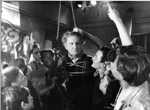 Géza Radványi: Somewhere in Europe, 1947 48.1 KByte
| 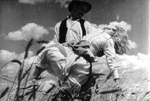 István Szőts: Song of the Cornfields, 1947 46.4 KByte
| 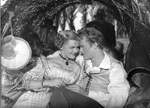 Károly Makk: Liliomfi, 1954 62.9 KByte
| 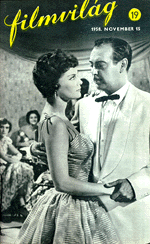 Filmvilág/Film Wolrd, rewiev 64 KByte
| 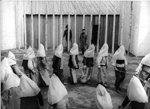 Miklós Jancsó: The Round up, 1965 59 KByte
| 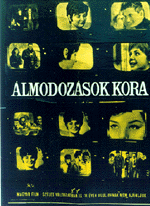 István Szabó: The Age of Day-dreaming, 1964 84 KByte
| 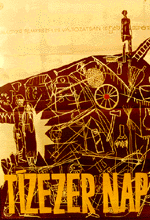 Ferenc Kósa: Ten Thousand Sons, 1965 107 KByte
| 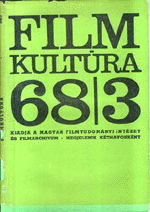 Filmkultúra/The Art of Cinematic Culture 44 KByte
| 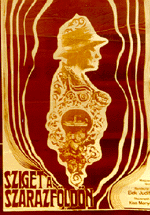 Judit Elek: The Lady from Constantinaple, 1969 92 KByte
| 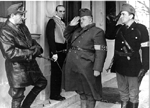 Márton Keleti: The Corporal and the Others, 1965 56 KByte
| 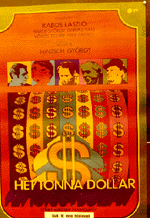 György Hintsch: Seven Tons of Dollar, 1973 82 KByte
|  Zoltán Fábri: The Tót Family, 1969 15 KByte
| 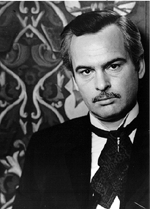 Zoltán Huszárik: Sindbad,1971
| 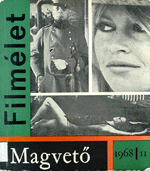 Filmélet/ Yearbook, 1989 74 KByte
| 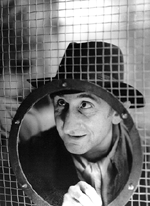 Pál Sándor: Deliver Us from Evil, 1978 40 KByte
| 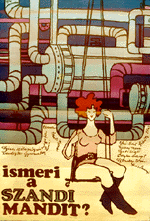 Lívia Gyarmathy-Géza Böszörményi: Do You Know "Sunday-Monday"?, 1969 86 KByte
|  Ferenc András: It's Rain and Shine Together, 1977 93 KByte
| 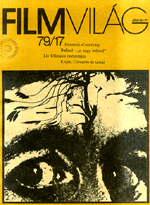 Filmvilág/Film Wolrd, rewiev 86 KByte |